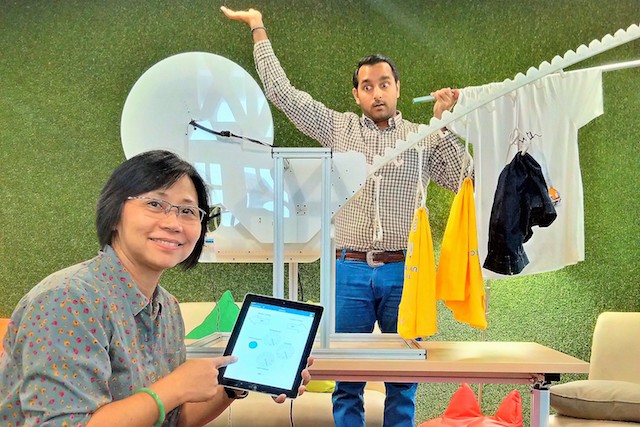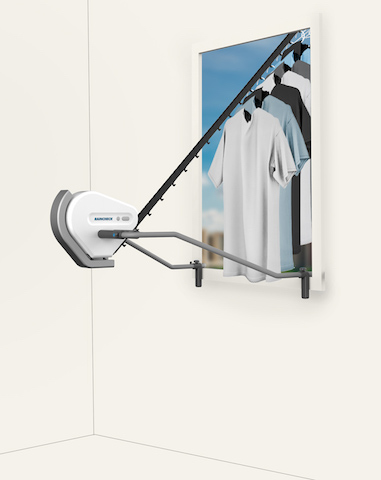Automated outdoor drying
An engineer is looking at automating an age-old laundry drying process so those with physical abilities can also manage.
BY: Eleanor Yap
It is a common sight in Singapore seeing clothes hanging on poles outside of the windows of HDB flats, but can you imagine that not everyone can easily handle them? A few years ago, Singaporean engineer Aashish Mehta, 35, witnessed his grand aunt, who was then in her mid-70s, navigating the laundry drying process with these poles in her HDB flat. She would put the clothes onto the poles and then put them outside the window to dry.
“With her being short, she had to tip-toe to put the poles outside and her hands would shake vigorously. It was very dangerous. She also had hearing problems so she didn’t know whether it was raining or not, and sometimes, her neighbours would have to warn her so she could quickly bring in the poles,” shared Aashish. He immediately shared his observations with his cousin, who then took over the role of drying the clothes.
Aashish added that in the US where he was studying, the norm was clothes’ dryers in people’s homes, however, in Singapore, people preferred outdoor drying. He then came up with a prototype in 2015, a contraption on the ceiling that allowed the poles to be automatically extended, however, someone would still need to put up the poles. The following year, he decided to do surveys and interviews of 50 people to not only get feedback on his initial prototype but also to understand the situation on the ground. “We found that contraptions on the ceiling would cost a lot to install and that it was hard particularly for the elderly to put these poles up to the ceiling,” explained Aashish.
However, his surveys did shed light on why people preferred outdoor drying and what they wanted as an ideal product. “We found people liked outdoor drying due to fast drying times and that because of the sun, it kills germs. It also eliminates smell on clothes and reduces clutter of not having a clothes’ dryer,” said Aashish. Outdoor drying was still not a foolproof solution; he also found there were many issues including the possibility of rain and safety when putting the poles outside the window and bringing them in especially when raining.
When he asked what were people’s top requests on a new product to address these gaps, those interviewed noted the issue of portability – the ability to tuck it away when not needed, small in size, automated and with a rain detection feature. Aashish then went back to the drawing board last year and came up with an improved product called Raincheck, that would tick off all the top requests earlier mentioned and offer much more.
Raincheck is an automated laundry drying system that is pole-less. It can be retrofitted to any window or balcony, without any need for drilling, and it can be stowed away after use. It offers a simple loading process where you can load your clothes whilst sitting on a chair in the comfort of your home and with one touch on the button, your clothes are sent out ready to be dried. It also has a rain detection feature using sensors so if rain is detected, the clothes are automatically brought in and with Raincheck’s smartphone integration, you are notified on the status of your laundry and estimated drying times, without a single finger ever going outside of a window. The first version will be restricted to 15 pieces of clothes and will have a proprietary locking system to ensure clothes don’t fly off when it is too windy.
“We are now at the testing stage and fabricating three units for people to try out. Currently, we are looking for people with physical limitations (wheelchair or back issues) and elderly (60 and above),” said Aashish. He added that his company Medarwin has already secured S$8,000 funding from Give.asia with the money matched by Singtel through the telecom company’s Future Makers programme to produce the fabricated units. After testing, he is planning to give away the fabricated units or the actual products, whichever is preferred, to three people who need them the most. Before that, he hopes to get feedback from users on the fabricated units and then improve Raincheck further.
“I want to know that it is beneficial and then I can use that to get additional funding if needed,” said Aashish. If everything goes as planned, the product will be out in the market by end of this year costing around S$350, making many people’s lives easier in the process.
** For those interested in testing the product, please e-mail Aashish at aashish@medarwin.com.




0 Comments